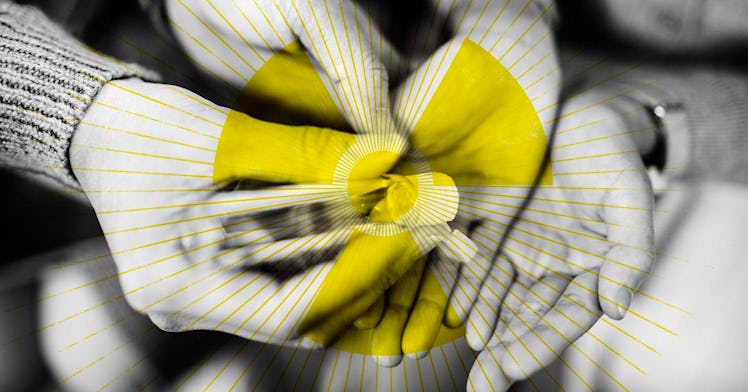How To Get Rid Of The Common Toxic Chemicals Invading Your Home
Everything from plastics to cosmetics leach chemicals into your home. Here’s how to purge it.

It’s safe to say we all have been spending more time indoors this past year. With coronavirus in the air, “going out” is something that requires planning and caution. Most people are, justifiably, focused on the dangers lurking in the grocery store and at school. But everyday chemicals inside the home pose their own invisible threat to families’ health.
Toxic chemicals are surprisingly common in the home. Seventy-four percent of plastics in food packaging and storage containers have toxic substances like bisphenol-A (BPA) and phthalates, according to a study from the American Chemical Society. These plastics are continuously shedding chemicals into the food your family eats. Phthalates are also found in everything from flooring to children’s clothing to the dust in our homes.
These chemicals affect the health of both adults and children, and even small doses may be enough to disrupt a child’s development. Numerous studies, including my own, have linked childhood exposure to phthalates and BPA with decreased IQ, behavior problems, obesity, food allergies, eczema, asthma, and respiratory infections. My research at the Brown University School of Public Health also found that early childhood exposure to triclosan, an antimicrobial chemical common in products like cosmetics, is associated with attention problems and hyperactivity in school-aged children.
Expecting parents should be especially cautious, as many chemicals find their way into the womb, where they can cause lasting damage. Prenatal exposure to a group of chemicals used as flame retardants, called polybrominated diphenyl ethers (PBDEs), is associated with poorer memory, cognition, and motor skills among school-aged children. My research also found that higher BPA levels during pregnancy are linked to obesity in young children.
The risk of everyday chemical exposure has probably increased during the pandemic. We’re relying on chemical-laden cleaning products and protective equipment to keep us safe and using more single-use plastics for takeout. Surgical masks, personal protective equipment, and food packaging are often made with phthalates and another group of chemicals called perfluoroalkyl substances (PFAS), which weaken children’s immune systems and might reduce their response to some vaccines.
To keep your family safe from toxic chemicals, you need to take stock of what’s in your home. Start with an inventory of your toiletries. Lotions and cosmetics that are perfumed or fragranced typically contain high concentrations of phthalates and other potentially harmful chemicals. Instead, look for products that are labeled phthalate-, paraben-, and petrochemical-free.
It’s also important to keep your home clean to remove chemical build-up. Mop or vacuum at least once a week, especially if you have carpets, which can capture chemical-laden dust. The next time you buy a new vacuum, consider upgrading to a model with a HEPA filter that prevents particulate matter from recirculating in your home’s air.
Look for ways to shake up your family’s diet. Whenever possible, opt for fresh and frozen fruits and vegetables instead of canned, processed, and packaged foods. BPA is used in the linings of some food packaging, and eating canned foods has been linked to increased BPA exposure. Use glass containers to store food. If you do use plastic containers, avoid heating food inside them. Reduce pesticide exposure by thoroughly washing your produce or seeking out organic alternatives.
Another thing you can do is install a granular activated carbon filter on your kitchen sink, since tap water can be a source of chemicals like PFAS. Adding a filter, even the simple kind you find at the grocery store, may significantly cut down the amount of these chemicals your family ingests. Whenever possible, drink from glass or stainless-steel containers because some plastic bottles contain BPA.
Finally, look for ways to spend more time outside, especially now that the weather’s warm. While it’s impossible to completely eliminate chemicals from your home, spending more time outdoors can reduce your exposure. Chemicals typically don’t accumulate and linger outside the same way they do indoors. As an added bonus: You’re also less likely to catch the coronavirus when hanging out with friends and family if you’re not penned in by walls.
Dr. Joseph Braun is an Associate Professor in the Department of Epidemiology at the Brown University School of Public Health. His research focuses on the effects of environmental pollutants on children’s health and the risk factors for pediatric diseases.
This article was originally published on